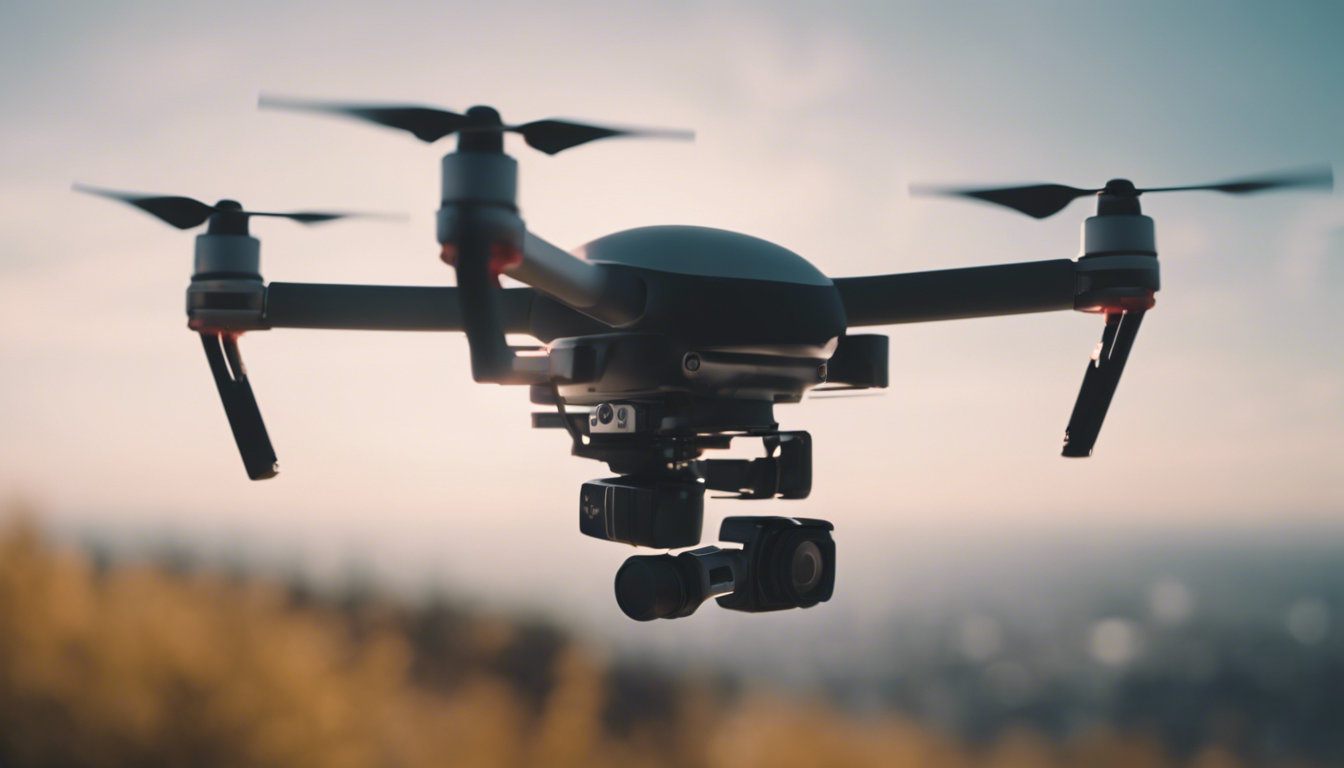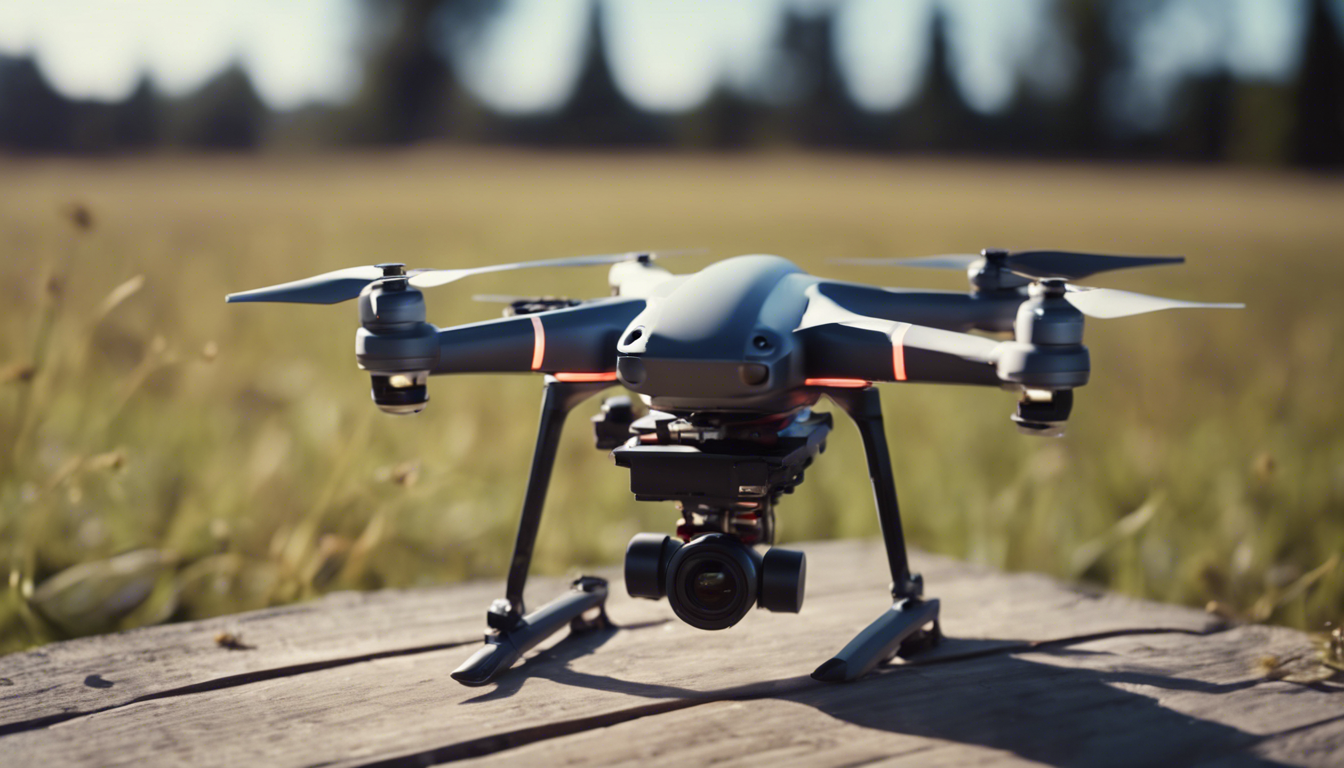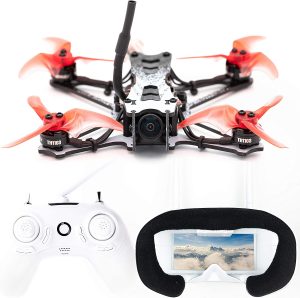
Evolution of drone technology in filmmaking
The advent of drone technology marked a seismic shift in the world of filmmaking, where aerial shots were once the exclusive domain of high-budget productions that could afford helicopters or cranes. But oh, how times have changed! The rapid evolution of drones has democratized the skies for filmmakers of all stripes, making jaw-dropping aerial cinematography accessible even on a shoestring budget.
Let’s rewind a bit. Remember the bulky, noisy contraptions that resembled miniature helicopters? Those were the early ancestors of today’s sleek, unobtrusive drones. In their infancy, drones carried hefty cameras with questionable stability, often resulting in shaky footage that could induce a sense of seasickness rather than awe. But brace yourselves — the growth spurt in drone tech has been nothing short of remarkable.
Imagine drones now so light and nimble that they can zip through the narrowest of spaces, capturing angles so unique that viewers are left scratching their heads, wondering, “How in the world was that shot?!” We’re not talking about your run-of-the-mill overhead shots, folks. We’ve entered an era where drones can execute complex, dynamic maneuvers to deliver cinematic gold.
But it is not just the drones themselves that have evolved; it’s also the cameras they bear. They’ve slimmed down significantly while packing more features than ever before. Gone are the days of grainy, low-res footage. Modern-day drones come equipped with cameras that can shoot in glorious 4K or even higher resolutions, offering filmmakers crystalline clarity and vibrant colors that could make a peacock jealous.
Real talk: drones have become so integral to filmmaking that they’re now shaping the very essence of how stories are told. Take, for instance, a drone quietly tailing a character as they meander through a bustling market or rapidly ascending to reveal the breathtaking scale of a landscape. These shots, once deemed impossible or prohibitively expensive, are now within arm’s reach, quite literally.
What’s even more astonishing is the way drones have fostered creativity among filmmakers. With tools that were previously unimaginable, directors and cinematographers can now craft scenes that defy traditional limitations. They can orchestrate sweeping aerial ballets or create tension by employing stealthy, predator-like drone movements.
So, where do we stand today? The fusion of portability, contemporary imaging, and automation has turned drones into not just a tool, but a whole new genre of expression in film. As they continue to evolve, becoming smarter and even more inconspicuous, the possibilities for future storytelling are as boundless as the skies they roam.
Regulatory landscape for drone cinematography
Now, let’s float down from the clouds for a moment and tackle something a bit more grounded — the rules and regulations that govern the buzzing bees of cinematography. Navigating the regulatory landscape of drone filmmaking isn’t quite as exhilarating as orchestrating an aerial chase scene, but it is critical to flying high without legal woes.
Every filmmaker knows that with great power comes great responsibility, and that’s no less true when your camera takes flight. Depending on where you’re in the world, your dreams of capturing that perfect birds-eye view could be curtailed by a web of regulations that often change faster than drone technology itself. The reason? Safety, privacy, and airspace control, which frankly, are pretty important matters.
In many countries, you’ll need to tread through a maze of certifications, permits, and no-fly zones before your drone’s rotors can even consider about spinning. For instance, did you know in some areas you’re required to keep your drone in line of sight at all times? Or that there are restrictions on flying over crowds and built-up areas? That is right, no sneaky shots zooming over unsuspecting pedestrians unless you’ve got the green light from the powers that be.
Another juicy tidbit is that, at certain times, airspace could be closed off unexpectedly. Consider visiting dignitaries, natural disasters, or other events that might tickle the interest of national security. And say goodbye to whimsically launching your drone near airports unless you fancy a chat with the authorities and a possible dent in your wallet.
But hey, it is not all red tape and stern looks from officials. The upside to all this regulation is that when you’ve jumped through the right hoops, you can pilot your drone with peace of mind, knowing you’re not going to inadvertently cause an international incident. Plus, these rules help maintain a standard for quality and professionalism in aerial cinematography — it keeps the cowboys at bay.
Amid this evolving regulatory atmosphere, it’s fascinating (and sometimes headache-inducing) to see how filmmakers adeptly navigate the labyrinth to bring their aerial visions to life. Plenty have mastered the art of obtaining the right permissions and choosing the right moments and locations to launch their high-flying companions. This aspect of the craft doesn’t usually make it to the behind-the-scenes footage, but it’s as vital to aerial cinematography as the drones themselves.
To all the aspiring drone cinematographers out there, here’s a piece of wisdom: keep your manuals close, but keep the regulations closer. Or even better, befriend a good lawyer who’s as passionate about the sky as you are. The future of drones in filmmaking is not just about technological prowess but also about understanding the rules that allow such devices to coexist with society safely and respectfully.

Cutting-edge camera and stabilization systems
When it comes to bringing cinematic dreams to life, the camera and stabilization systems onboard drones are the unsung heroes. Without these cutting-edge marvels, your breathtakingly gorgeous drone footage would be as stable as a three-legged table in an earthquake. So strap in—because the technology powering these cameras is advanced enough to make your head spin like the rotors on a quadcopter.
First off, cameras have undergone a revolutionary diet; they’re lightweight without compromising quality. We’re seeing sensors that are incredibly sensitive, capable of capturing the faintest twinkle of starlight for those night-time chase sequences or the most minute detail of a protagonist’s furrowed brow from a hundred feet in the air. And, oh boy, they’ve got megapixels to spare!
Resolution you ask? It is shooting through the roof! Many consumer drones are now rocking cameras that can capture 4K video at 60 frames per second. That is smooth, crisp footage that can make even the most stoic viewer’s jaw drop. But the magic doesn’t end there. High dynamic range (HDR) capabilities are now in the mix, allowing drones to catch every nuance of a scene, from the brightest highlight to the deepest shadow, without breaking a digital sweat.
It is not just about what the camera can see, but also how steadily it can see it. This is where gimbal stabilization systems come into play. These ingenious contraptions can keep your camera as stable as a statue even if this drone is swaying, swooping, or being buffeted by winds that would make a kite surfer think twice. Three-axis gimbals are now pretty much standard fare, offering yaw, pitch, and roll stabilization that is smoother than a buttered bowling ball.
And it gets even cooler. Some systems offer 360-degree camera rotation, freeing cinematographers from the tyranny of fixed angles. Want to follow an actor as they dash through a revolving door, then catch their expression as they exit? Easy peasy. This technology lets your drone twirl its camera like a figure skater mid-jump, capturing footage that could make an audience dizzy with delight.
But wait, there’s more—object tracking. Yes, many drones now boast artificial intelligence that can lock on to a subject and follow it with the tenacity of a Labrador with a tennis ball. This means that instead of focusing on piloting, you can channel your energy into creativity. Let this drone do the hard work while you sculpt the art.
And for those worried about the risk to their aerial ace, fear not; obstacle avoidance technology has seen leaps and bounds in development. Many drones can now sense and dodge obstacles with the finesse of a parkour athlete, meaning your risk of a mid-air crash is lower than ever.
The integration of these camera and stabilization systems into drones is overhauling the very fabric of filmmaking. Choices in lens and depth of field that once felt restrictive in aerial shots now offer the same latitude as ground-based cinematography.
So here’s the bottom line: with the wondrous wizardry of today’s camera and stabilization tech, drones are capturing footage that can quite literally elevate a story. They’re not just tools but paintbrushes offering broad, sweeping strokes as well as finely detailed lines. And this, dear readers, is only the beginning. As cameras become even more powerful and stabilizers even steadier, we stand on the cusp of an era where the sky is not the limit—it’s the canvas.
Creative opportunities in storytelling with drones
Picture this: a drone hovers silently beside an actor’s face, close enough to catch the shimmer of a tear as it rolls down their cheek, before gracefully soaring skyward to reveal a solitary figure amidst the vast expanse of an empty field. These are the kinds of mesmerizing moments that drones bring to the table (or rather, the sky) for storytellers.
What we’re witnessing now is a renaissance in visual storytelling, powered by these flying companions. Gone are the days where aerial shots were reserved solely for expansive landscapes or establishing locations. Now, drones can be intricately woven into the narrative itself. Ponder a lover’s sorrowful goodbye as seen from above, magnifying the emotional distance, or the anxiety of a thrilling pursuit through twisting alleys captured with heart-pounding proximity.
Drones allow for a new language of cinema to emerge. They’re redefining what’s possible, letting filmmakers play with perspective in ways that used to be the stuff of dreams. With a drone, a director can craft a scene where the audience flies alongside the protagonist, sharing in their journey, their triumphs, their defeats. That is immersion on a whole new level.
But it is not just about epic wide shots or breathtaking vistas. Drones are proving themselves to be masters of subtlety as well. They can be used for quiet, intimate scenes—capturing those “between moments” that are often lost. Imagine a drone capturing the loneliness of a character in a vast, empty space, or the chaotic movement of a bustling city street from the unique vantage point that only a bird—or a drone—could have.
- Say goodbye to the static crane shot. Drones can add movement to scenes that traditionally would have been filmed from a fixed position.
- Intricate choreography is now possible as drones dance with actors to create a breathtaking pas de deux.
- For the horror aficionados, drones can provide ominous, peering shots through windows, or sudden, jarring movements that mirror a character’s shock or fear.
Drones are reshaping the very psychology of a scene. They bring a psychological weight, giving filmmakers the ability to literally and metaphorically elevate a scene. They offer a glimpse into the mind of a character, their worldview expanded or contracted through the lens of the drone.
Take horror film directors, who already make us squirm in our seats. They can now employ drones to create an uneasy tension that has us scanning every corner of the frame. Suspense can be dialed up to eleven when a drone hovers eerily at a window, peeks around a corner, or chases a screaming victim through a forest—are we the predator, or are we in the predator’s sights?
Let’s also think the emotional depth that a well-executed drone shot can bring. A lonesome hero standing atop a crumbling edifice, their cape billowing around them—a drone slowly encircles them, the world spinning, a feeling of both grandeur and helplessness palpable in the air. It is a tiny, intimate moment and a grand, sweeping statement all simultaneously.
In essence, drone cinematography is not just about capturing breathtaking aerial footage; it’s about pushing the boundaries of how stories are told. Drones are ushering in an era of cinematic innovation where the sky’s practically bubbling with creative potential. As these flying cinematographers become more advanced and intuitive to use, directors and writers will have even more freedom to dream up stories that stretch, swoop, and soar right off the screen.
Predictions for drone advancements and industry impact
Envision a near future where the line between science fiction and reality is blurred by the whir of drone propellers. As we speculate about where drone technology is heading, it’s not just the technical capabilities that get our hearts racing—it’s the new dimensions they’ll add to the art of storytelling and the subsequent impact on the industry.
Consider swarm technology, which is already in its experimental phase. Imagine coordinating a fleet of drones, each armed with a camera, to create a simultaneous multi-angle shot that provides a 360-degree narrative experience. The result? An immersive cinematic event that could transform the viewer into an active participant in the scene, rather than just a passive observer.
Autonomous drones could become so advanced that they’re practically crew members. With AI-driven systems, these smart machines would analyze scripts, interpret cinematic requirements, and execute complex sequences with minimal human input. The autonomy in drones will not only shift the way scenes are shot but also potentially reduce the time and manpower required, significantly impacting production costs.
- Personalized storytelling might not be far off. Drones could be programmed to react to audience emotions, changing the viewpoint or the way a story unfolds.
- For the eco-conscious, drones could provide a greener alternative to traditional filmmaking techniques, reducing the carbon footprint of a production by eliminating the need for helicopters, cranes, and excessive travel.
What if drones became the new norm for live broadcasting? They could offer live feeds from angles previously deemed impossible, providing event coverage this is as dynamic as it is comprehensive. Sports events, concerts, or even news reporting could be elevated to an unprecedented level of engagement, bringing the audience into the heart of the action.
And, as battery life improves and flight times get longer, drones could undertake continuous shooting without the need for frequent landings. This might make drones suitable for longer-form narratives, such as full-length feature films or complex television dramas shot predominantly from the air.
But let’s not forget the broader industry impact. We might see film schools introducing specialized drone cinematography courses, new categories in film awards dedicated to aerial footage, and directors and cinematographers who specialize solely in drone-based shooting.
As drones grow more sophisticated, we could witness the birth of new film genres that rely heavily on the capabilities of aerial cinematography. Perhaps a sub-genre of action films will emerge, where the high-flying perspective of drones is central to the narrative and visual experience.
So, whether it’s innovating on set, expanding the creative horizons, or revolutionizing live events, one thing’s crystal clear: drones have not yet reached their zenith. The potential is as limitless as the sky they inhabit. The day when drones boldly take the director’s chair might be just beyond the horizon, and it is a narrative shift we’re all waiting to watch unfold.
